Weird School Traditions Around the World: From Cleaning Classrooms to Forest Lessons
- Amanda Jones

- Aug 8
- 6 min read
Updated: Aug 9
As American students gear up for another school year with their standard rituals of supply shopping and first-day photos,it's fascinating to discover how dramatically school experiences vary across the globe. What we consider "normal" education - sitting at desks, raising hands, taking tests - would seem utterly bizarre to students in many other countries. Let's take a journey around the world to explore some of the most surprising, delightful, and downright weird school traditions that might just change how you think about learning.
Japan: Where Students Are the Janitors
Imagine if you're child came home from school and announced they'd spent the last hour of their day scrubbing toilets and mopping floors. 😂 In most American schools, this would signal a serious disciplinary issue. In Japan, it's called soji no jikan (cleaning time), and it's as fundamental to education as math or reading.
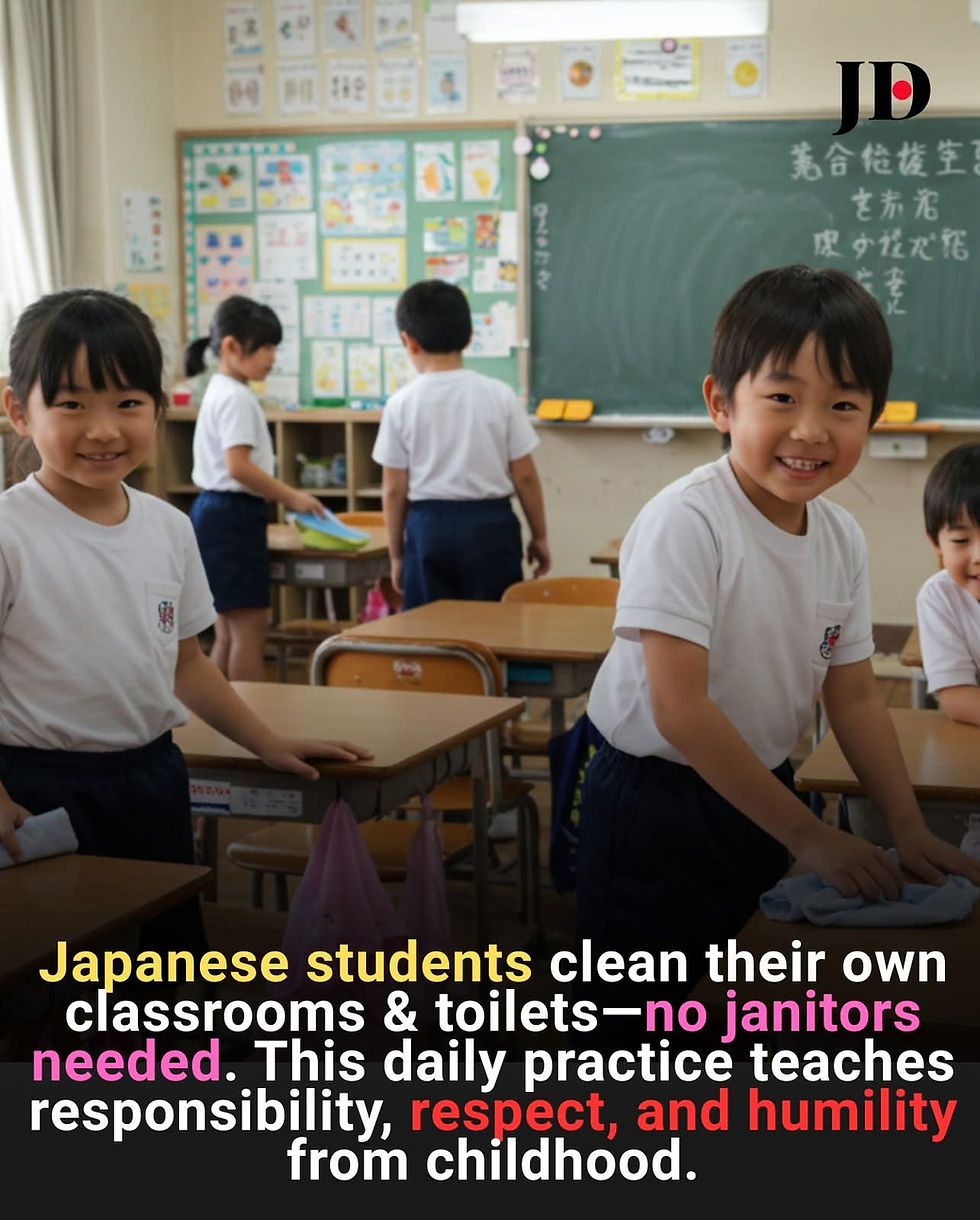
Every single day, Japanese students from elementary through high school spend 15-20 minutes cleaning their school from top to bottom. They're divided into small groups called han, each responsible for specific areas: classrooms, hallways, bathrooms, even the school grounds. Students rotate through different cleaning assignments throughout the year, ensuring everyone experiences every aspect of maintaining their learning environment.
This isn't punishment- it's philosophy. The practice stems from Buddhist and confucian principles that view physical cleanliness as connected to mental clarity and moral development. Students learn omotenashi (hospitality and consideration for others) by maintaining spaces they share. They also develop what Japanese educators call "collective responsibility" - the understanding that everyone benefits when everyone contributes.
The results speak for themselves. Japanese schools are notably cleaner than their international counterparts, and students show remarkable respect for their physical environment. You'll rarely see graffiti, litter,or vandalism in Japanese schools because the students themselves are responsible for the consequences.
Germany: The Sweet Start with Schultute
Picture this: It's your child's first day of school, and you hand them at colorful cone nearly as tall as they are, stuffed with candy, school supplies, and small toys. In Germany, this isn't spoiling - it's Schultute, a 200-year-old tradition that turns the potentially scary first day into celebration.
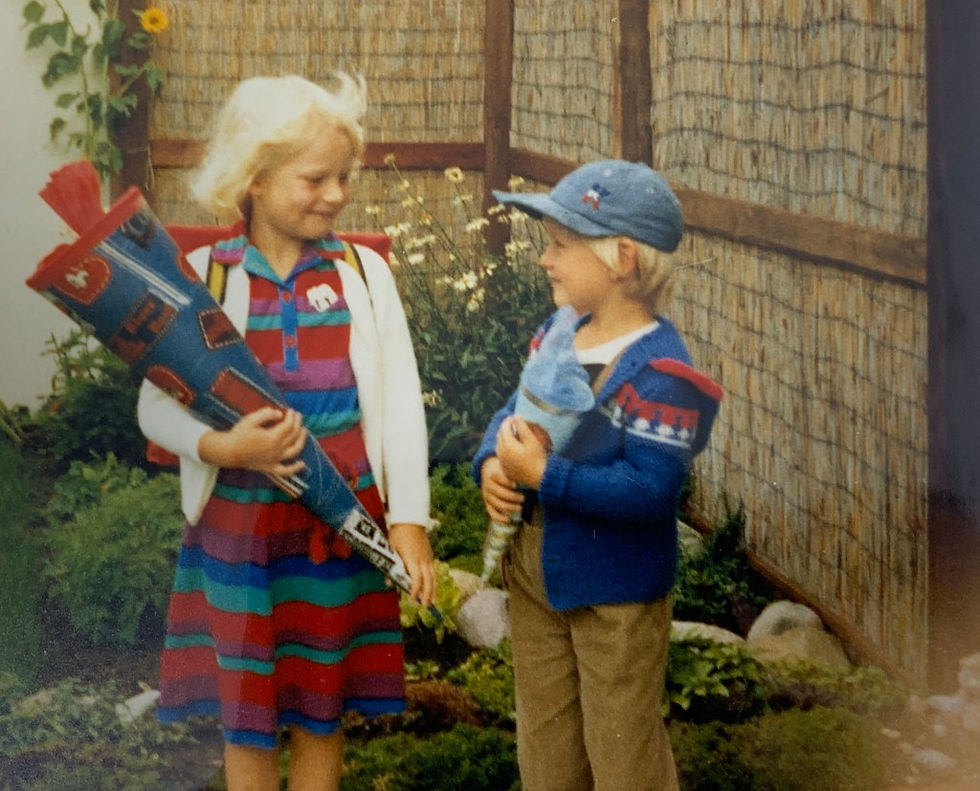
These elaborate paper cones, also called Zuckertute ( sugar cones), are a rite of passage for German six-year-olds entering first grade. Parents spend weeks crafting or purchasing these personalized cones, filling them with everything from gummy bears and chocolate to pencils, erasers, and small books. The tradition is so embedded in German culture that the first day of school is called Einschulung, and it's often celebrated with family parties.
The Schultute tradition began in Saxony and Thuringia in the early 1800s when parents told children that a "school tree" grew magical cones for students ready to learn. Children had to wait until the cones were "ripe" before they could start school. While the magical tree story has faded, the tradition has spread throughout Germany and into neighboring countries.
What makes this tradition particularly endearing is it's psychological wisdom. The Schultute transforms the first day from potentially anxious separation into an anticipated treat. Children associate starting school with receiving gifts and family celebration, creating positive neural pathways around learning from day one.
Finland: Classrooms Without Walls
Finnish students might be the only ones in the world who consider getting lost in the woods a regular Tuesday. Finland's metsakoulu (forest schools) take education literally outside the box, conducting regular lessons in nature regardless of weather - and yes,that includes during harsh Nordic winters.
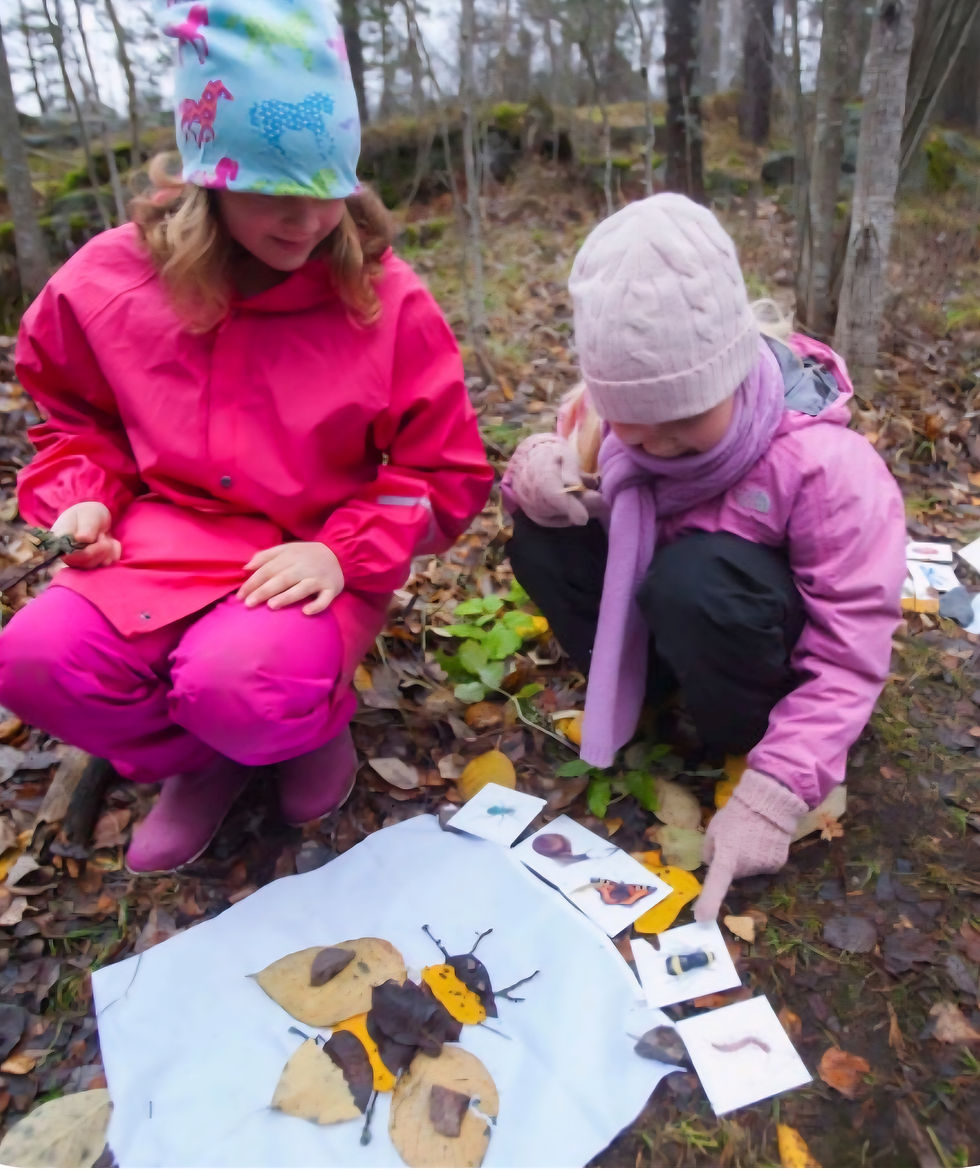
In these outdoor classrooms, students might learn math by measuring tree circumference, study biology by observing actual ecosystems, or practice language arts by writing poetry inspired by natural observations. The philosophy is simple but revolutionary: nature is the richest learning environment available, offering endless opportunities for hands-on discovery that no traditional classroom can replicate.
The forest school movement isn't just about fresh air and exercise, though both are significant benefits. Research shows that outdoor learning improves student focus, reduces stress, and enhances creativity. Finnish educators report that students who struggle in traditional classroom settings often thrive in forest environments, where they can move freely and engage multiple senses while learning.
What's particularly "weird" to outsiders is the weather commitment. Finnish students attend forest school in temperatures as low as -10°C (14°F). The saying goes: "There's no bad weather, only bad clothing." Students learn to dress appropriately for outdoor learning, developing resilience and adaptability that serves them throughout life.
India: The Blessing of Books
In many schools, particularly those following traditional values, the school year begins with Saraswati Puja, a ceremony honoring the goddess of knowledge and learning. Students place their books and learning materials at the feet of Saraswati's statue or image, seeking blessings for the academic year ahead.
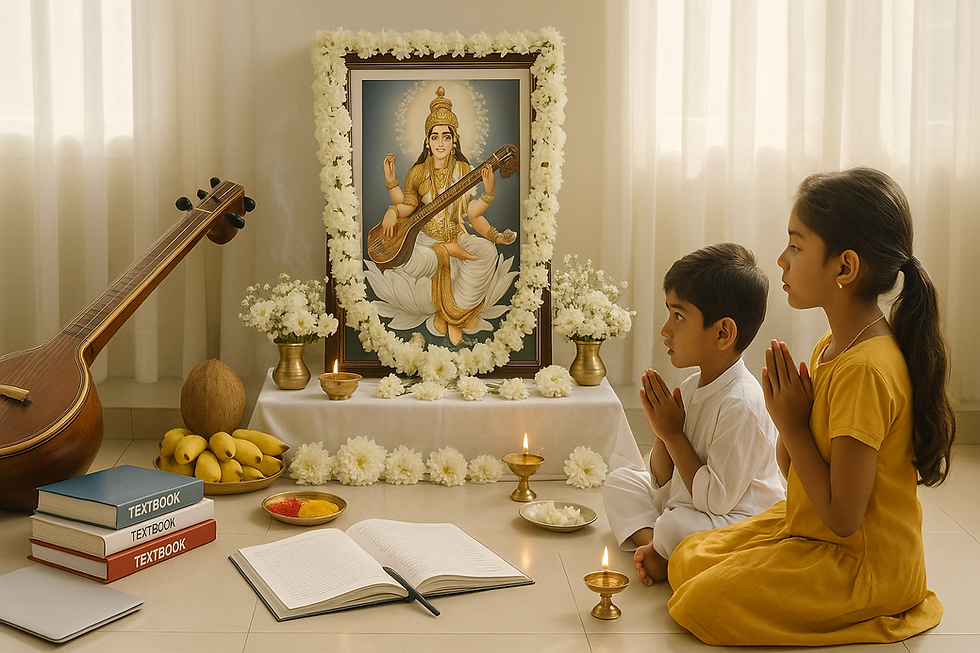
But here's the beautiful twist: before students can touch their books again, they must perform Pranaab - touching the books with their hands and then touching their foreheads and hearts. This ritual reinforces the belief that knowledge is sacred and should be approached with reverence and humility.
Throughout the year, many Indian students practice the tradition of never placing books on the floor or stepping over them. If a book accidentally falls to the ground, students will often touch it and then touch their forehead as an apology. This isn't superstition - it's a cultural practice that elevates learning materials from mere objects to sacred vessels of knowledge.
South Korea: The Birthday Classroom Takeover
Korean students experience something unthinkable in most western schools: on their birthday, they become the temporary teacher. The birthday student gets to lead morning activities, choose classroom games, and even assign light homework to their classmates. The teacher steps back and let's the birthday child experience leadership and responsibility.

This tradition, called saengil chukha celebration, goes beyond just recognition. It's designed to build confidence, leadership skills, and empathy. When students experience being in charge, they often gain new appreciation for their teachers' daily challenges. Classmates also learn to respect and support different leadership styles as each student brings their unique personality to their birthday teaching day.
Russia: The Knowledge Day Flowers
September 1st in Russia isn't just the first day of school - it's Den Znaniy (knowledge day), a national holiday celebrating education.

Students dress in formal uniforms, bring enormous bouquets of flowers for their teachers, and participate in elaborate school ceremonies that would rival many graduation celebrations.
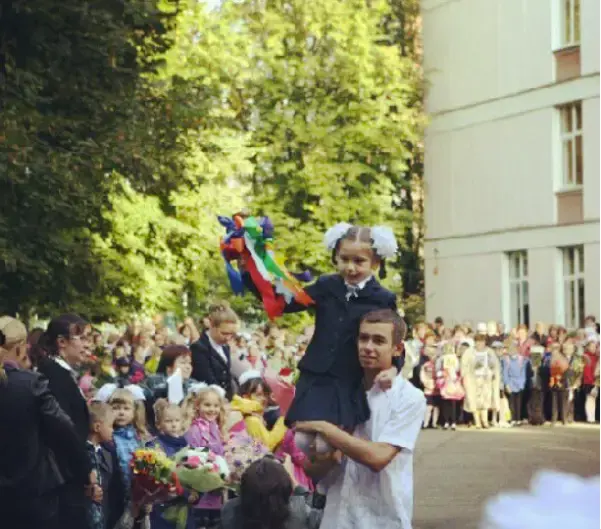
First-Graders receive special attention, often being welcomed by older students who act as mentors throughout the year. The day includes speeches, performances, and the ringing of the "First bell" - traditionally done by a first-grade student carried on the shoulders of an eleventh-grader, symbolizing the continuity of learning from youngest to oldest.
What These Traditions Teach Us
These "weird" traditions reveal something profound about how different cultures view education. Japanese cleaning time emphasizes collective responsibility and respect for shared spaces. German Schultute makes starting school a celebration rather than an ordeal. Finnish forest schools recognize that learning happens everywhere, not just within four walls.
Each tradition addresses fundamental aspects of human development: responsibility, celebration, connection with nature, reverence for knowledge, leadership, and community. They remind us that education isn't just about transferring information - its about shaping values, building character, and creating meaningful experiences that students carry throughout their lives.
As American schools continue evolving, perhaps we can learn from these global traditions. Maybe our students would benefit from more hands-on responsibility for their environment, more celebration around learning milestones, or more time connecting with nature. After all, what seems "weird" to us might just be wonderfully wise.
The next time your child complains about their ordinary school day, you might share some of these traditions. They just might appreciate their climate-controlled classroom a bit more - or maybe they'll ask why they can't have their math lesson in the woods. Either way, they'll learn that education around the world is far more diverse, creative, and wonderful than they ever imagined.
CLICK the picture below to download this FREE Back to School Coloring Page

Here's a fun back-to-school fact for you:
The yellow bus wasn't always yellow! The iconic color was officially standardized in 1939 at a conference where transportation officials from across the United States decided on "National School Bus Glossy Yellow." They chose yellow because it's the color most easily seen in early morning and late afternoon light - even in your peripheral vision - making it the safest choice for transporting students.
Before this, school buses came in all sorts of colors including red, blue, and white. The standardization helped make school buses instantly recognizable and much safer on the roads!

Welcome to Designs by Mandy!
I'm Amanda, a designer dedicated to providing valuable tips, tools, strategies, and worksheets for children. To learn more about me or explore my website, click the link below.









Comments